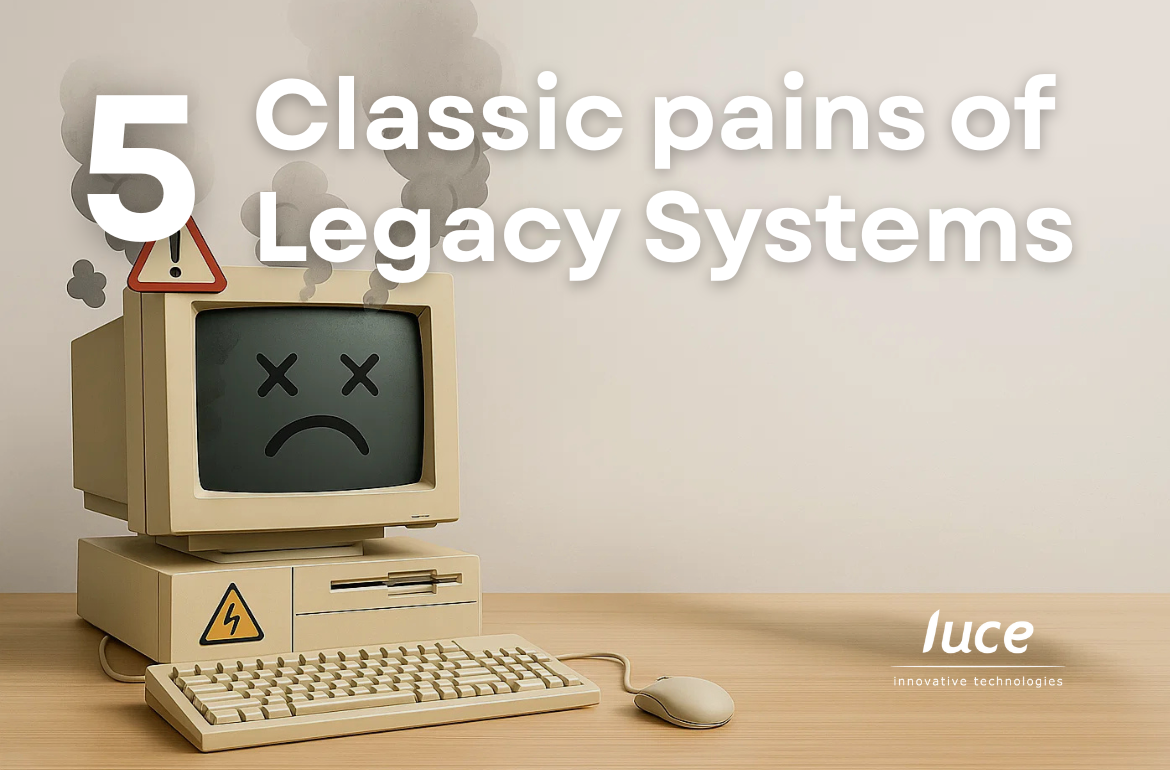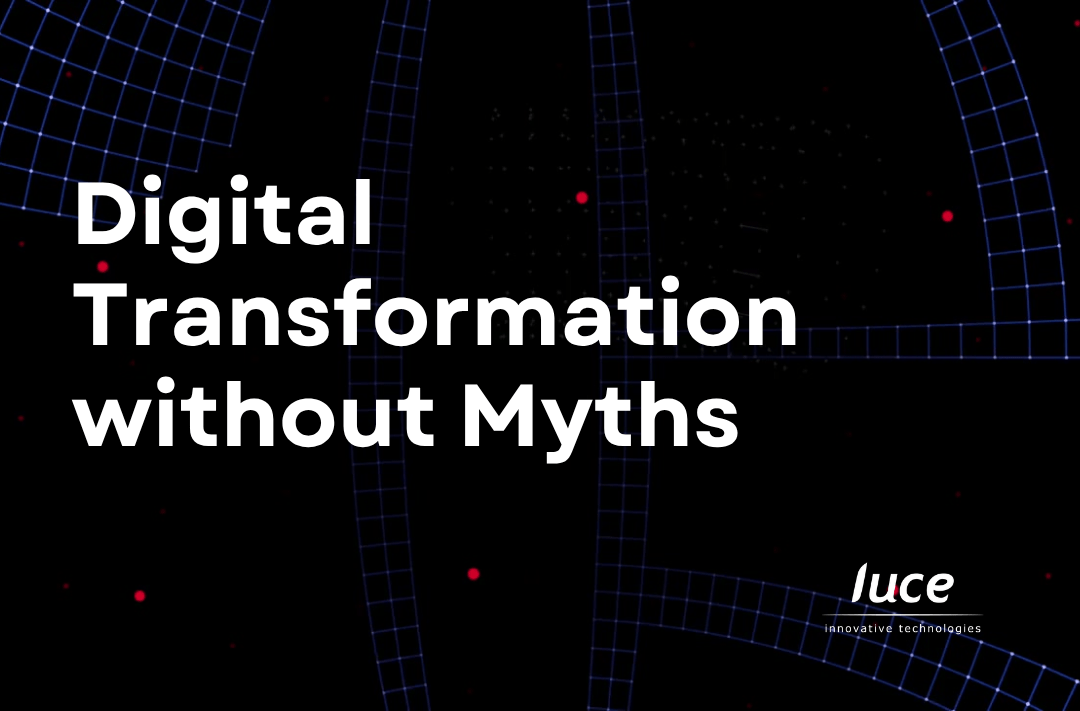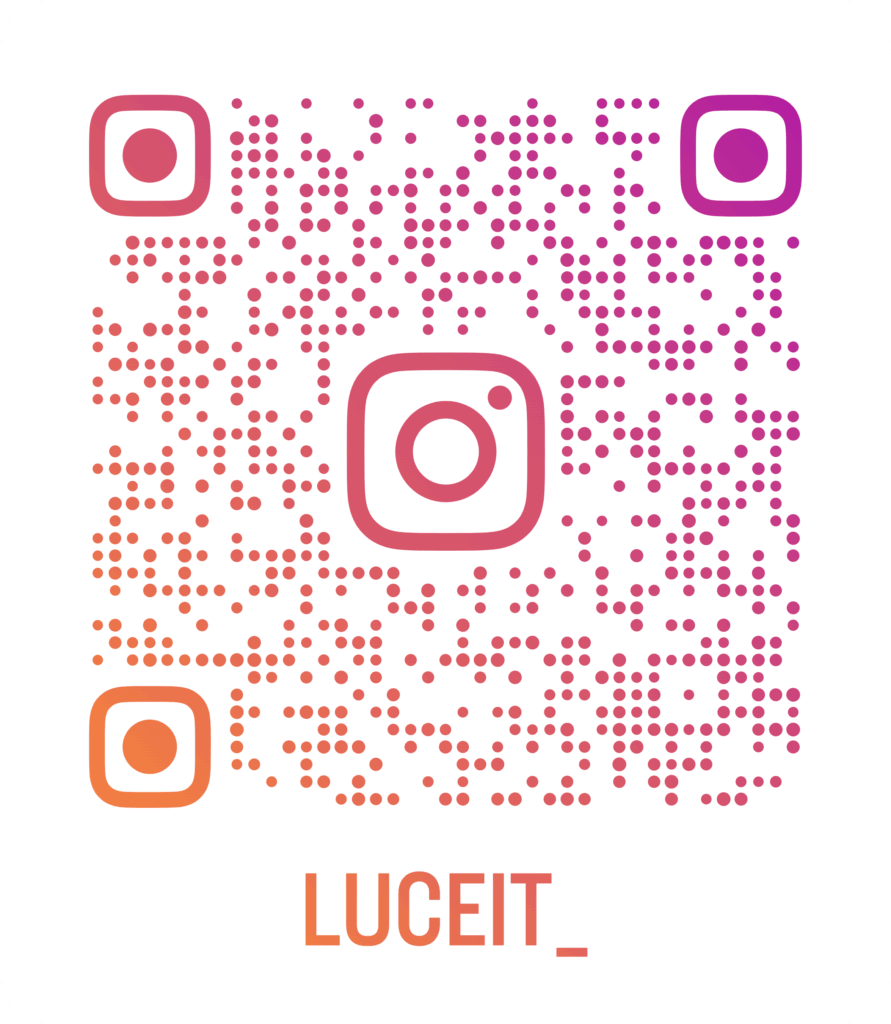
5 classic pains of legacy systems
Acelera la Eficiencia Operacional en tu Empresa
En muchas organizaciones, el ecosistema de aplicaciones crece durante años como un rompecabezas mal ensamblado: soluciones puntuales, tecnologías dispares, sistemas que nunca fueron pensados para trabajar en conjunto. El resultado es un panorama complejo, costoso y poco ágil. Estos son los dolores clásicos que surgen… y cómo la Operational Grid Layer (OGL) el asset de Luce puede ser la solución estratégica que los alivia.
A continuación, desglosamos cinco de los retos más recurrentes en la gestión de datos que pueden estar impidiendo que tu negocio alcance su máximo potencial operacional:
- The Abundance and Management of Historical Data
One of the most common challenges is the vast amount of data and tables accumulated over time. Organisations are often faced with uncertainty about what information to retain or delete, especially when dealing with very old data. This situation not only consumes storage resources, but also complicates sourcing strategy, historification, data ingest design and managing the historical depth needed for the business.
Solution:
OGL enables the definition of a clear ingestion and storage strategy, distinguishing between essential operational data and data that should only be stored for analytical or historical purposes.
Thanks to its modular architecture and differentiated layers (RAW, Normalised, Analytical), it is possible to control the historical depth efficiently, prioritising the value of the data over its age or volume.
- Data Duplication and Inconsistency Between Systems
Another crucial pain point is the existence of duplicate data between different systems. This problem is recurrent and leads to multiple drawbacks: not only does it generate cost overruns and complexities in infrastructure maintenance, but it also introduces inconsistencies that can severely affect the reliability and quality of information. The primary objective is to have the least possible duplication of data between systems to avoid these problems.
1-to-1 integration between systems leads to data duplication, inconsistencies and almost unsustainable maintenance. For example, a simple product catalogue can exist in five different versions, with subtle but critical differences.
Solution:
Centralise access to information with a single logic, standardising data and avoiding duplication. Thus, systems no longer have to synchronise with each other, but consult a single point of truth.
- A poor user experience that costs you customers
When user-facing systems – such as websites, mobile apps or self-service tools – rely directly on operational systems for data, the experience is often compromised. Slow queries, long load times and multiple screens to complete a task lead to frustration, abandonment and lost conversion.
Solution:
By introducing an intermediate layer that decouples the user experience from the operational transaction. It retrieves the necessary data, normalises it, enriches it and makes it available quickly and efficiently. In this way, 95% of information requests do not need to touch the base system, allowing real-time data to be displayed without sacrificing speed or quality of experience. This is key for environments such as ecommerce, after-sales or customer service.
- Operational staff collapse due to excessive workload
As the number of data consumers (front-ends, apps, APIs, integrations) grows, so does the volume of requests against operational systems. This overload can cause response times to increase dramatically, degrade business-critical processes or even cause chain failures.
Solution:
With the Operational Grid Layer, systems do not directly access the operational core, but do so through a decoupled and optimised layer. Information can be cached, preloaded and managed with specific logic to minimise the number of direct queries to the core.
In addition, data can be consumed in batch mode or in real time as needed, guaranteeing the stability of the base system and allowing for sustainable scalability.
- Obsolete technologies, silos, and lack of global vision
Organisations that have grown by integrating specific solutions over time often end up with a fragmented ecosystem: different languages, databases, vendors and business logic.
This diversity not only slows down innovation, but also makes it difficult to have a clear, shared and actionable business vision. In addition, obsolete or non-interoperable technologies generate dependency (lock-in) and increase maintenance costs.
Solution:
Unifies data access and logic under a common architecture, allowing to operate on a single chosen technological layer, independently of the particularities of each legacy system. With a single logic and a common language (catalogue, dictionary, standardised APIs), silos are eliminated, technological dependency is reduced and the capacity for analysis and decision-making is drastically improved. OGL allows you to move with agility in hybrid and multi-technology environments without being stuck in the past.
In an environment where legacy systems, technological heterogeneity and the pressure to deliver outstanding digital experiences coexist on a daily basis, the Operational Grid Layer is positioned as a key solution to transform chaos into order. It’s not just about technology, it’s about strategy: decoupling, standardising, optimising and scaling in a sustainable way.
The value of this middle layer is not just in what it connects, but in what it enables: more informed decisions, more agile development, more reliable data and happier users. In short, it is a modern way of addressing the same old challenges.
Luce IT, your trusted technology innovation company
The Luce story is one of challenge and non-conformity, always solving value challenges using technology and data to accelerate digital transformation in society through our clients.
We have a unique way of doing consulting and projects within a collegial environment creating “Flow” between learning, innovation and proactive project execution.
At Luce we will be the best by offering multidisciplinary technological knowledge, through our chapters , generating value in each iteration with our clients, delivering quality and offering capacity and scalability so they can grow with us.



